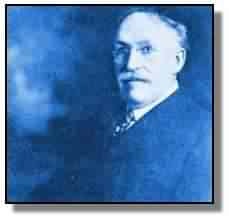History of Lake Shastina

When the first pioneers began to settle in the Shasta Valley, the land was dry and scorched; water was scarce and farming was difficult. It wasn't until the young Dr. Dwinnell arrived from Chicago in 1891 that water was to become more easily available. Between 1913 and 1915, Dr. Dwinnell helped establish the Shasta River, Big Springs, and Mt. Shasta Land Company Water Districts.
Farmers investigated diverting the Klamath River to all the non-irrigated areas of the Shasta Valley. But complications with this idea, all of which are not fully understood, caused interest to turn to a natural reservoir site about 15 miles South-East of Montague.
Dr. Dwinnell envisions turning this reservoir into a large lake to gravity feed water via a long canal with lateral ditches to a large portion of the Shasta Valley. Thus with the cooperation of local farmers and entrepreneurs, the Montague Irrigation District was born on April 13, 1925.
Civil Engineer, John A. Beemer designed a system that would deliver up to 60,000 acre feet of water from the Shasta River and Parks Creek. The blueprints of Beemer's unique design now reside in the Smithsonian. In order to pay for the construction of the project, bonds were issued with the more appealing name of Montague Water Conservation District. Farmers were nervous about their investment. If the dam didn't deliver, many investors would become penniless.

The Nevada Contracting Company began construction of Dwinnell Dam in 1926. Construction of the dam - the 1,800 foot flume, trestles, the 21 mile long canal and the 55 miles of laterals - went smoothly and on time. But soon disaster struck. The problem that arose was not in the structural integrity of the project but in filling the reservoir. Geological faults and crevices prevented the water from filling the newly constructed ditch system.
The farmers greatest fear became a reality when their fields were either flooded or completely devoid of water. To make matters even worse, the next three years were the driest on record for Siskiyou County.
Meanwhile, many different methods were used attempting to stop the leaks: Dropping hay bales into cracks in the reservoir, moving earth to cover larger cracks, and even filling large holes with cement. In the end however, it was Mother Nature who ultimately had come to the rescue. As if by divine intervention, the lake began to seal itself with silt and small debris that worked its way into the cracks and crevices.
By 1947 the reservoir was about 50% efficient and as improvements continued the district increased the allowance from 35,000 acre feet to 50,000 by 1955. Dr. Dwinnell's dream had now finally become a reality.
